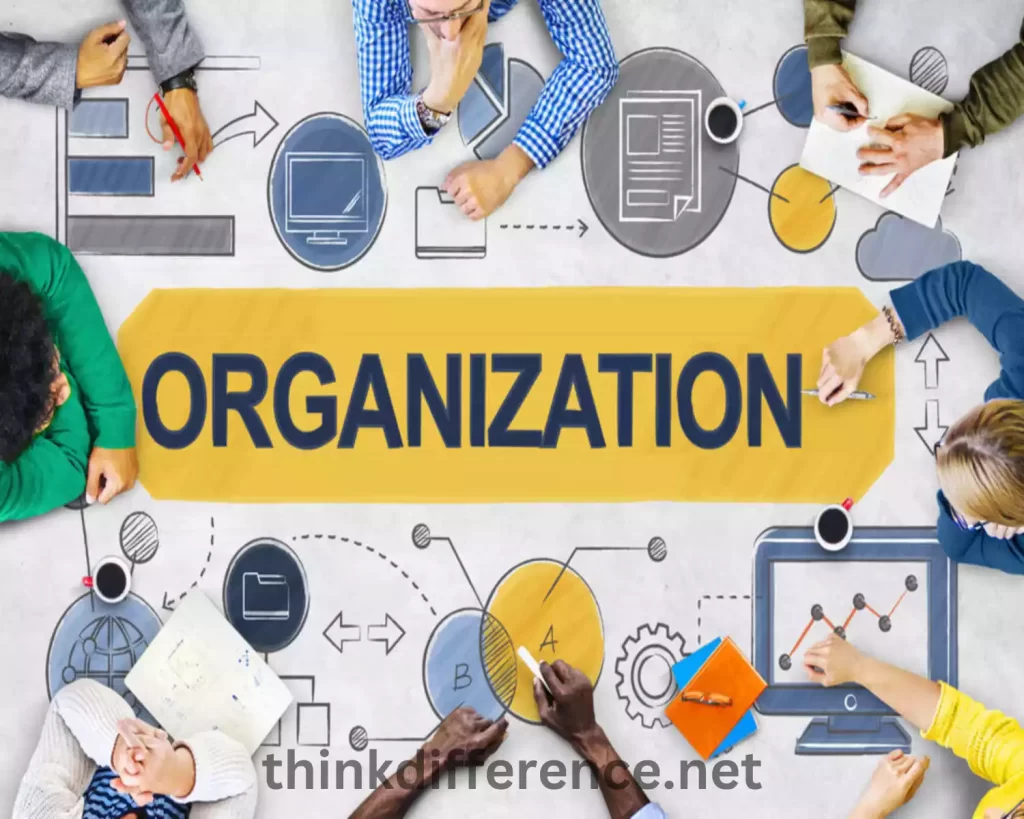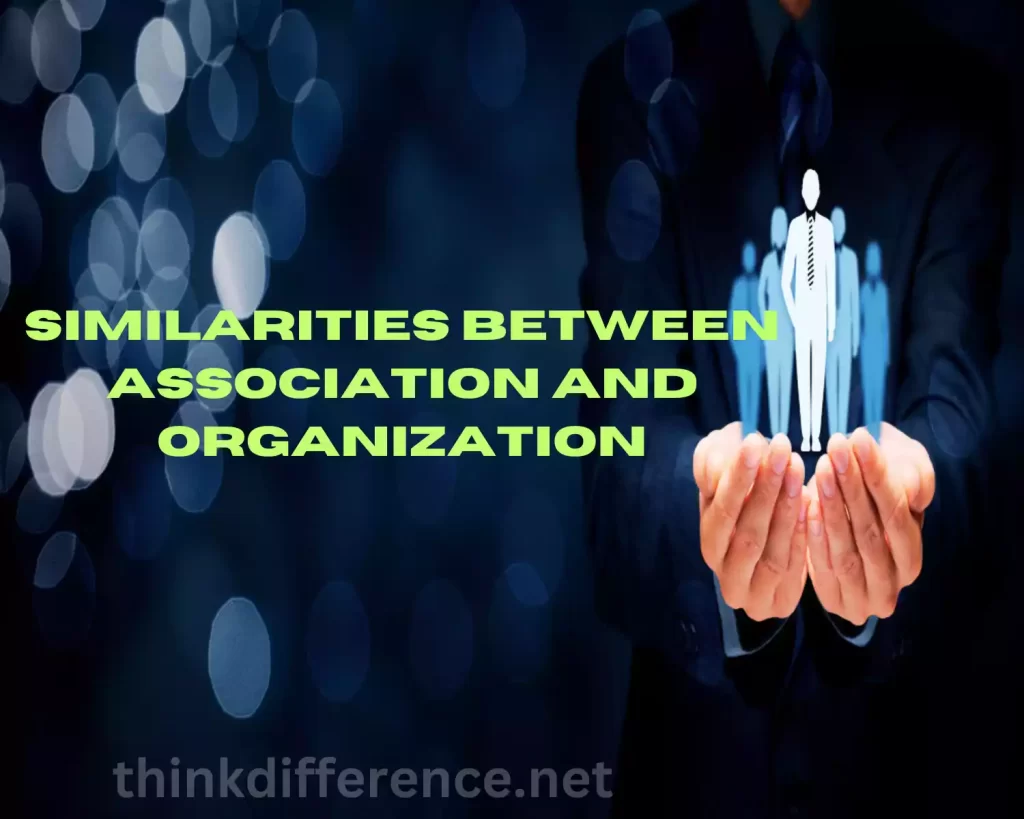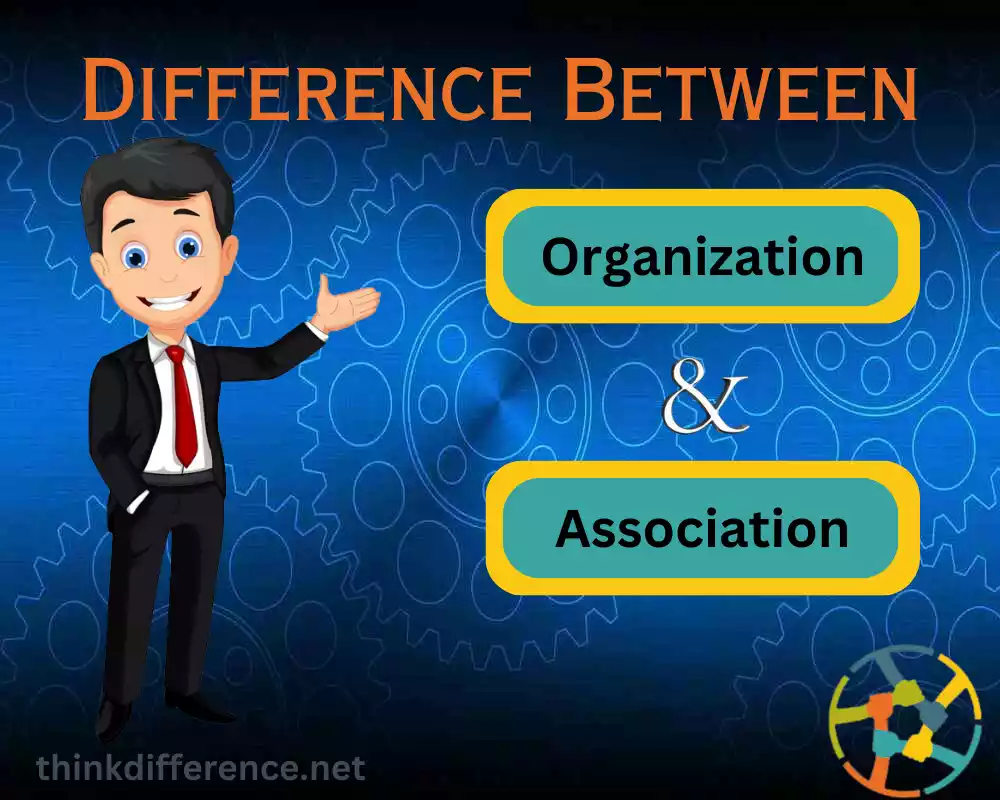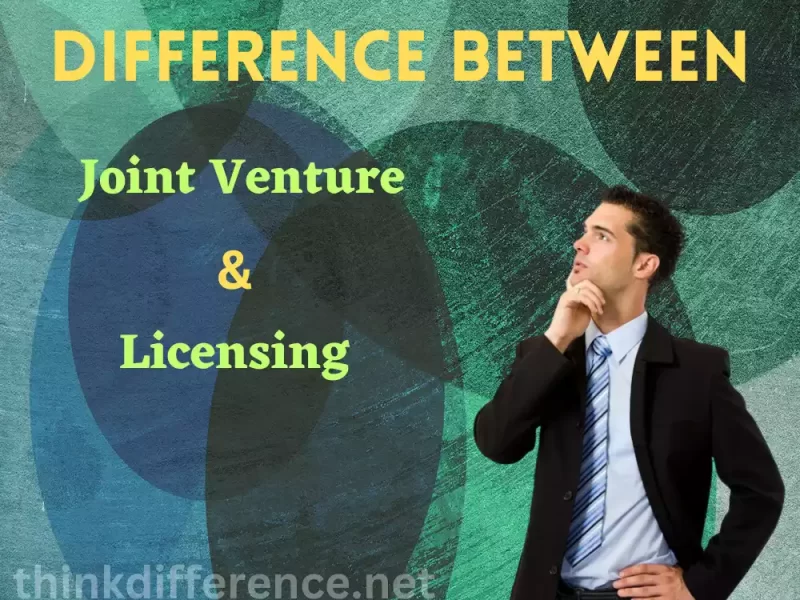Definition of Association and Organization
An association is any collection of individuals or organizations who share common goals or interests, typically formed to advance a profession, industry, or interest area; provide a platform where those interested can connect and collaborate; can be formal or non-formal and often operate as a not-for-profit or non-profit organizations.
They act as advocates for their members by offering resources and networking opportunities and building a sense of community among participants; some even incorporate democratic decision-making processes so their members can influence the activities of an organization while participating in its governance processes.
Associations are groups of people or organizations who share common interests or goals and come together as formal or non-formal organizations with similar missions to advocate on their behalf while offering resources, networking opportunities, and creating a sense of community among participants.
Understanding the difference between Association and Organization is vitally important
Understanding the difference between associations and organizations is important for several reasons:
- Clarity of Purpose: Understanding the differences helps individuals and organizations align themselves with groups that best suit their goals and objectives. Organizations and associations tend to have specific missions or goals they strive towards, making an educated choice as to which entity might best suit them.
- Effective Participation: Being informed on whether an entity is an association or group will help people understand the level of involvement required from them in its affairs. Associations rely heavily on democratic decision-making and member involvement while organizations may utilize formalized structures. Knowing the differences can assist people in fulfilling their roles more successfully.
- Networking and Collaboration: Associations and Organizations offer networking and collaboration opportunities, but their nature may vary significantly. Associations tend to form around common interests that allow members to form bonds with peers who share similar views; organizations offer avenues for structured collaboration through team initiatives or coordinating efforts toward specific goals – it is therefore beneficial for individuals to understand each entity to maximize networking and collaboration opportunities.
- Legal and Governance Considerations: Associations and organizations may vary considerably in their legal structures and governance considerations, from regulations applicable only to organizations to general corporate laws which govern associations. Therefore it’s crucial for those involved in creating, managing, or governing such entities to understand the differences so as to comply with all applicable regulations while fulfilling obligations accordingly.
- Resource Allocation: Associations and Organizations may take different approaches when allocating their resources; organizations prioritize resources by their objectives while associations focus on meeting member needs and interests. Understanding these differences will assist those looking for resources or support to find the most beneficial routes available to them.
Understanding the differences between organizations and associations enables individuals and entities to make more informed decisions and engage effectively, as they can navigate the dynamics and expectations associated with each type. Understanding these distinctions also facilitates collaboration and networking efforts as well as participation increases ensuring compliance with legal and governance requirements.
Characteristics of an Association
An association typically possesses the following characteristics:
- Voluntary Membership: Membership in an association should be voluntary; individuals or entities who join are doing so out of common goals or interests that they share with its membership.
- Shared Goals or Interests: An association brings together people or entities with shared concerns, goals, or interests – these shared passions serve as its cornerstone and drive its activities.
- Non-profit or Not-for-profit Status: Associations usually operate under non-profit status. While their revenue could come from membership fees and other sources, their primary mission should always be serving members’ needs or fulfilling members’ interests.
- Democratic Decision-Making Processes: Many associations employ democratic decision-making processes that allow members to influence the direction and policies of their association through voting or consensus-building processes. This decision-making can allow members more say over their policies and actions.
- Limited Formal Structure: Associations tend to operate more informally than corporations; though they may establish formal documents like bylaws or governance documents, their structure allows them to adapt more readily in response to members’ needs and wishes.

Figure 01: Characteristics of an Association - Focusing on Members’ Needs and Interests: Associations exist to serve their members’ needs and interests, be that in terms of resources, services, advocacy, or providing an avenue to collaborate on common goals or discuss concerns that arise within communities. Therefore the activities undertaken by associations largely aim to meet those aspirations by fulfilling members’ requirements and needs.
- Networking and Community Building: Associations foster networking and community building among their members. Membership allows people and entities with similar interests the chance to come together, share knowledge and expertise, build professional relationships, and support each other within their local environment.
- Advocacy and representation: Many associations engage in advocacy efforts on behalf of their members or specific causes, acting as representatives in terms of raising awareness, shaping opinions, advocating policies or changes which align with goals or shared interests, etc.
- Education and Professional Development: Associations offer educational programs designed to expand and sharpen members’ abilities and knowledge. Such initiatives allow members to stay abreast of industry trends, best practice guidelines, and advancements within their chosen fields.
- Networking and Collaboration Opportunities: Associations offer their members opportunities for collaboration and networking. Through conferences, forums or events they organize people can gather to exchange ideas while working collaboratively on initiatives or projects of mutual interest.
While these characteristics of associations are typically seen, it’s important to keep in mind that not every association will display each characteristic equally. An association’s size, purpose, and membership could determine their nature and function differently.
Characteristics of an Organization
An organization typically exhibits the following characteristics:
- Structured Hierarchy: Organizations employ hierarchies to outline their organization’s chain of command and who reports directly to whom. There are various levels of authority ranging from top management down to frontline staff members that form this hierarchy.
- Establish A Clear Division Of Work: In any organization, there must be an organized division of labor where various departments or individuals have specific tasks and responsibilities that help distribute work efficiently among its members while making sure everyone fully comprehends his/her roles and responsibilities. This division ensures the most productive results.
- Purpose-Driven Goals: Organizations are driven by specific goals and objectives that guide their operations, such as providing products or services, reaching financial targets or fulfilling missions, or performing public service work. Structure and activities within an organization should help to meet this endpoint.
- Formalized Rules and Regulations: Organizations typically create formalized policies, rules, and procedures to govern how they operate. These rules help ensure efficiency, consistency, and compliance with ethical and legal standards as well as what the organization expects in terms of behavior, decision processes, and operational aspects.

Figure 02: Characteristics of an Organization - Potential for Profit or Non-profit Status: Organizations may operate either for profit or non-profit. Profit-focused organizations seek to maximize earnings and create revenue; non-profits operate without this primary aim in mind and focus more on furthering a specific cause or providing services with no emphasis placed on financial gain.
- Focus on Organizational Goals: At an organization’s heart lies its primary mission – meeting its goals. This requires strategic planning and resource allocation as well as performance measurement for continuous improvement to help meet organizational targets.
- Formal Structures & Processes: Organizations have formal structures such as teams, departments, and divisions which enable communication, coordination, and decision-making within an organization. These formal structures establish reporting relationships as well as roles and responsibilities of members within them. Furthermore, for efficient operations, organizations also create processes like budgeting and performance evaluation in place to support efficient operations.
- Accountability and Performance management: Organizations utilize systems to track team and individual performance and hold them accountable; such measurements might include evaluations, KPIs (key performance indicators), or incentive-based rewards and bonuses for reaching targets or meeting KPIs (key performance indicators).
- Legal Status and Compliance: Legal Status and Compliance Organizations must abide by applicable laws and regulations, operating within legal structures such as registered non-profits or corporations that grant them rights and obligations.
- Stakeholder Relationships: Organizations maintain relationships with various stakeholder groups such as customers, employees shareholders suppliers, and communities that impact its reputation, customer satisfaction, and overall performance. Effective management of these relationships is vitally important to an organization’s success and should not be neglected as this impacts reputation, customer service satisfaction, and overall performance.
An organization’s characteristics will depend upon factors like size, industry, and culture; using these as an overview allows people to better comprehend which traits typically characterize organizations.
Differences between Association and Organization
These key differences between organizations and associations can help summarize them:
1. Membership:
- Associations: Joining an association is usually voluntary and determined by shared goals or interests; individuals or entities join to benefit from its activities.
- Organizations: Membership in an organization typically hinges upon employment or hierarchy; members are appointed or employed and their participation depends upon their roles and responsibilities within its structure.
2. Structure and Decision-Making:
- Associations: Associations generally employ an informal structure and democratic decision-making processes where members influence both activities and policies of their association.
- Organizations: They feature formalized structures with hierarchies and division of labor. Decision-making within organizations typically occurs from the top down with senior-level managers making decisions that then cascade down through lower-level employees to affect lower employees.
3. Purpose and Goals:
- Associations: Associations are formed with the primary purpose of meeting members’ needs and furthering their interests, by serving their collective needs while encouraging networking opportunities amongst all their members.
- Organizations: Organizations have specific purposes or goals and aim to meet them through providing products or services, making a profit, providing public services, or fulfilling missions.
4. Profit Orientation:
- Associations: Associations are typically non-profit entities. While they may generate some revenue via membership fees or other sources, their primary mission remains serving their members and meeting their common interests.
- Organizations: Organizations may either be profit- or non-profit oriented. Profit-oriented organizations aim to maximize profits and generate revenue while nonprofit organizations serve a specific cause or mission without necessarily looking towards financial gain as the primary goal.
5. Legal Status:
- Associations: Associations are subject to laws and regulations applicable to non-profit, which define their operations and activities based on legal obligations and requirements.
- Organizations: Organizations must abide by all general corporate laws and regulations applicable to their industry/sector, in regard to taxation, reporting requirements, and business activities.
Understanding these distinctions allows individuals and entities to identify which entity best aligns with their goals, participation expectations, legal obligations, and decision-making process – thus helping individuals make informed choices regarding engagement, involvement, and resource allocation within organizations or associations.
Similarities Between Association and Organization

There are both similarities between associations and organizations:
- Collective Endeavor: Associations and organizations are both collective endeavors wherein individuals or entities collaborate towards a common objective or goal, often to produce results they would have been unable to attain individually. They provide people with opportunities to work collaboratively towards an outcome that they might otherwise never have been capable of attaining themselves.
- Group Formation: Organizations and associations come into being when individuals or entities with similar goals come together and form organizations or associations that reflect these common interests or concerns, creating an encompassing sense of community among their membership.
- Governance: Both organizations and associations possess governance structures with similar formality levels that help allocate resources, make decisions, and set policies.
- Networking and Collaboration: Associations and Organizations offer excellent networking and collaboration opportunities. Members can connect with others who share similar interests to collaborate on knowledge sharing, ideas exchange and project coordination.
- Resource Management: Associations and organizations alike engage in resource management. Both entities utilize resources, including money, human capital and physical assets, in pursuit of their respective goals.
- Impact and Influence: Associations and organizations have an enormous potential impact on both their members and stakeholders as well as on communities and industries as a whole. By advocating change or encouraging innovation within their fields of operation, associations and organizations have the power to exert immense influence over both.
- Representation: Associations and organizations serve their membership or stakeholders’ best interests by speaking on their behalf to raise awareness and advocate on their behalf for goals they share in common.
Associations and organizations often share similar attributes, each entity also exhibits distinct features that set it apart. To truly comprehend each entity’s role and purpose requires understanding both similarities and distinctions among them.
Examples and Illustrations
Examples of Associations:
- Professional Associations: The American Medical Association, American Bar Associations and American Psychological Associations are all professional associations. These associations bring professionals from diverse fields together for networking purposes, professional development resources and advocacy activities.
- Social Clubs: Rotary International, Lions Clubs International and Kiwanis International are examples of such associations that focus on community service through activities that combine service work with networking events and social gatherings aimed at giving back. Such clubs bring people who share an affinity for helping out together under one umbrella.
- Trade Unions: Trade unions such as United Auto Workers. American Federation of Teachers and International Brotherhood of Teamsters are associations which represent workers by representing their interests during collective bargaining agreements as well as advocating better working conditions and benefits for them.
Examples of Organizations:
- Corporations: Google, Microsoft Apple and Coca-Cola are corporations focused on profit. Operating across various industries like manufacturing, technology and consumer products; their aim is to maximize profits and generate revenue by selling goods and services produced or sold by them.
- Government Agencies: Agencies such as the Environmental Protection Agency, Federal Bureau of Investigation and Department of Health and Human Services are government entities mandated with providing public services as well as upholding laws and regulations.
- Non-Governmental Organizations (NGOs): Non-Governmental Organizations, such as Amnesty International and World Wildlife Fund are non-profit organizations dedicated to human rights. NGOs provide aid while advocating for change through non-profit status.
These examples are meant as illustrations only and do not accurately portray all available associations and organizations. Their sizes, scope, impact, focus and objectives all vary dramatically and meet various objectives and interests.
Finish
Associations and Organizations are powerful vehicles for change and progress. While associations focus on shared interests and collective action, organizations pursue specific objectives and tasks. Both play essential roles in advancing common goals, facilitating connections, and addressing societal challenges. By embracing innovative strategies and fostering active engagement, these entities can thrive in an ever-changing landscape.



